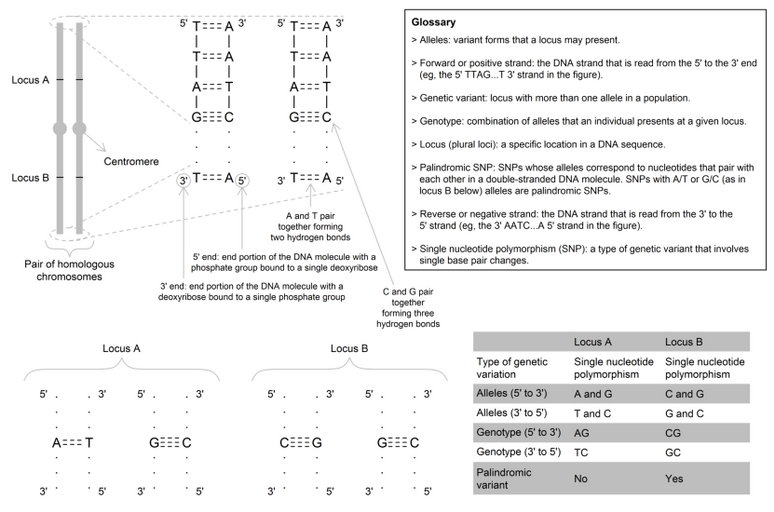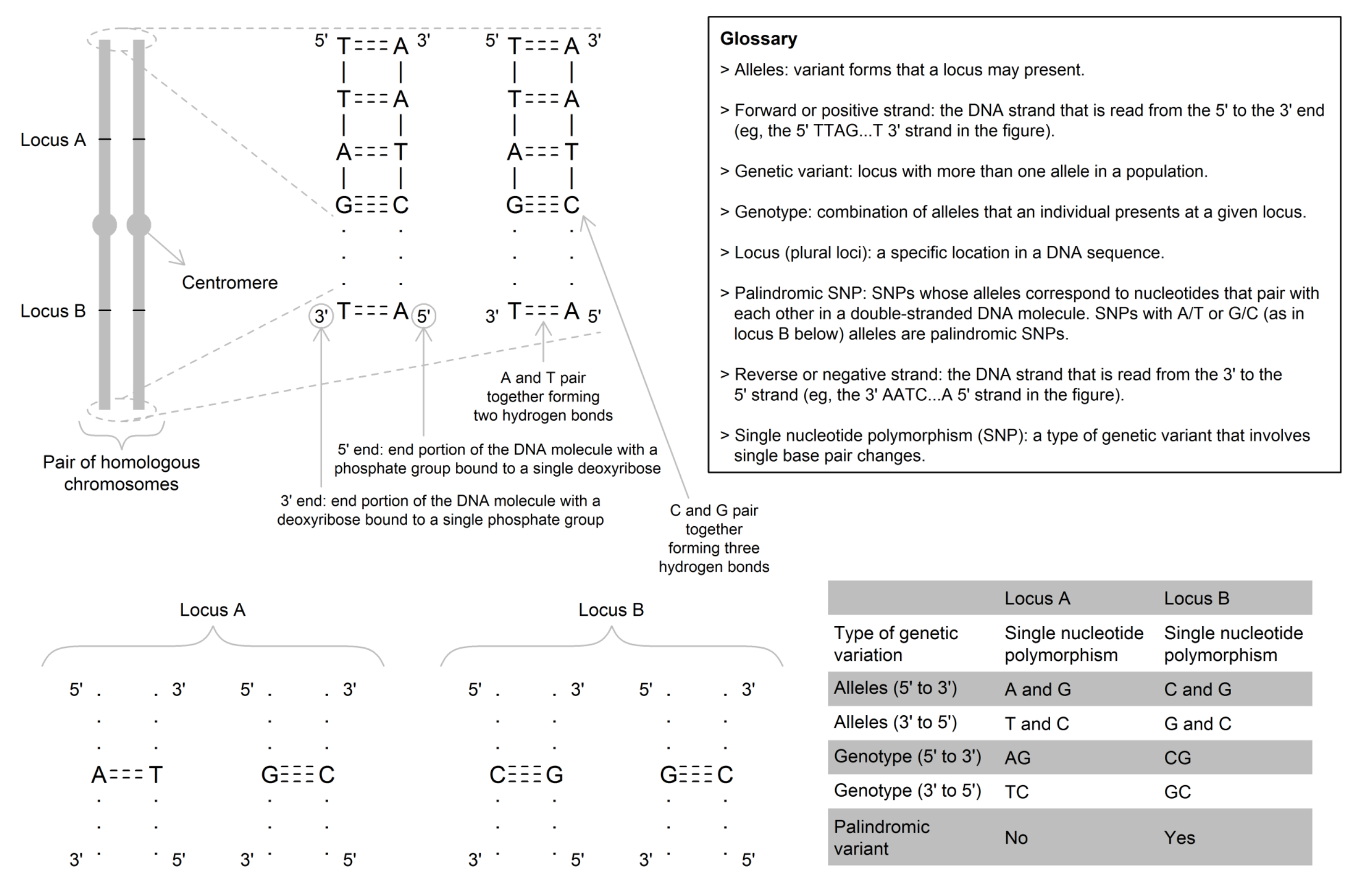Synonyms: ambiguous SNP
A sequence of deoxyribonucleic acid (DNA) is a palindrome if the 5’ to 3’ (sense or forward strand) sequence is the same as the 3’ to 5’ (antisense or reverse strand). For example, the sequence ACCTAGGT (reading 5’ to 3’) is a palindrome because its complement (3’ to 5’) is TGGATCCA. A palindromic SNP (also known as an "ambiguous" SNP) is a SNP in which the possible alleles for that SNP are the same alleles that would pair with each other in the double helix structure. When this occurs, alleles on the forward strand are the same as on the reverse strand (e.g., C/G on forward is G/C on the reverse, as shown in Figure 1.1).
In two-sample MR, it can be difficult to harmonize palindromic SNPs if it is unclear which way (5’ to 3’ or 3' to 5') the alleles are presented in the data sources providing information on the instrumental variable (IV)-exposure association and the IV-outcome associations (i.e., these would typically be genome-wide association studies (GWASs) when using summary-level data). For some palindromic SNPs, it is possible to infer the strand and thus the effect allele using the allele frequency information. Where this is not the case (e.g., the allele frequency information is not available), the options are to (i) assume all SNPs in both data sources (e.g., summary-level data from GWASs) have been presented in the same way (i.e., both on the forward, 5’ to 3’, strand) based on knowledge of other SNPs that are non-palindromic or (ii) drop all palindromic SNPs for which it is not possible to infer the direction. This second option may also be taken if the effect allele frequency of a palindromic SNP is close to 0.5, and thus the strand might not be confidently inferred.

References
Other terms in 'Useful genetic terms ':
- Allele
- Chromosome
- Cis- and trans-variants
- Copy number variation
- Deoxyribonucleic acid (DNA)
- Gene
- Genetic variant
- Genotype
- Haplotype
- Heterozygous or Heterozygote
- Homozygous or Homozygote
- Linkage disequilibrium (LD)
- Locus
- Polygenic risk score (PRS)
- Polymorphism
- Rare variants
- Single nucleotide polymorphism (SNP)

